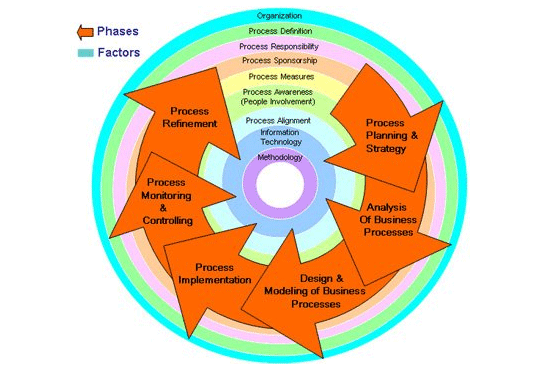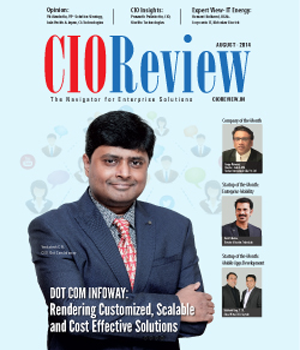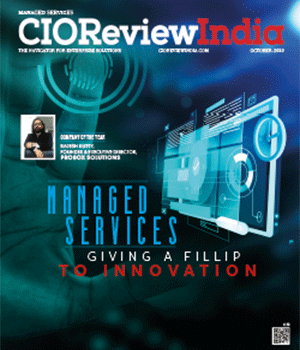
Shift From Process Improvement to Business Transformation is Behind the Move to Intelligent Business Process Management Suites
CIOReview Team | Tuesday, 09 June 2015, 12:25 IST
 Bangalore, India, June 1, 2015 — Worldwide spending on business process management (BPM) software is set to grow 4.4 percent to reach $2.7 billion in 2015, according to the latest forecast from Gartner, Inc. As organizations are beginning their digital transformation — rethinking their business models and processes to address customer and constituent expectations — a shift toward using what Gartner terms an intelligent business process management suite (iBPMS) is underway.
Bangalore, India, June 1, 2015 — Worldwide spending on business process management (BPM) software is set to grow 4.4 percent to reach $2.7 billion in 2015, according to the latest forecast from Gartner, Inc. As organizations are beginning their digital transformation — rethinking their business models and processes to address customer and constituent expectations — a shift toward using what Gartner terms an intelligent business process management suite (iBPMS) is underway.
Ahead of the Gartner Business Process Management Summit in Sydney next week, Gartner research director Rob Dunie said that managing business processes effectively is a difficult challenge for today's business leaders, because many of the systems that are used within processes are rigid and difficult to change rapidly.
"An iBPMS supports business responsiveness, often at the 'moment of truth' in a customer interaction," said Mr. Dunie. "The ability to provide more 'joined up' insight into business processes through the use of analytics — combined with support for the people involved in processes, allowing them to take advantage of this insight — is what differentiates today's iBPMS market from earlier BPMS technology markets."
There are four significant trends that Gartner is seeing in the iBPMS market:
1) Focus on Business Transformation
First, there has been a marked shift from focusing primarily on continuous process improvement to a greater focus on business transformation and addressing the dimensions of big change. Faced with both externally and internally driven change, organizations have a bigger need to reinvent themselves while also driving improvements in efficiency.
2) Digitalized Processes and the Internet of Things
Second, through the integration of various systems, including Internet of Things (IoT) technology (sensors, smart machines, robots and so on), combined with advanced analytics (such as pattern recognition and predictive analytics), companies are using an iBPMS to power their digitalized processes. Examples of "things" in the IoT may include household and business premises lights, smart electric meters, smoke alarms, security cameras, mobile devices, tools, toys, remote patient monitoring nodes, vending machines, parking meters and hotel door locks. In a digitalized process, IoT "things" are integrated to the business process in order to ensure that the process can adjust to changing conditions as necessary. Process innovation can happen more easily when such devices are orchestrated together with all other process participants.
3) Shift Away From Transactional Processes
Third, while an iBPMS can coordinate short-lived, transactional system-oriented processes, they are best used to manage long-lived business processes that span both people and systems as well as functional boundaries. While some vendors use similar process execution engines, pure service-oriented architecture (SOA) orchestration is no longer a focus of an iBPMS.
4) The Nexus of Forces — Mobile, Social, Cloud and Analytics
Further, the mobile, social, cloud and analytics features in iBPMSs are more capable and better integrated than they were in 2014. Those solutions that balance ease of use and time to solution alongside greater intelligence capabilities are seeing the most success. Also essential are strong partner networks for business transformation capabilities in addition to traditional implementation services.
According to Gartner, the iBPMS market is the natural evolution of the earlier BPMS market, adding more emphasis on support for greater system and human intelligence within business processes. However, as with previous evolutions, there are still many other kinds of BPM products that address less comprehensive market needs. When an organization faces relatively slow rates of change, has very low BPM maturity, or is focusing mostly on document-centric process automation, an iBPMS product may be overly complex for the task.
Capabilities such as "what if" process simulation, optimization and the ability to gain insight into process performance have been included in many BPMS offerings for several years. iBPMSs have added enhanced support for human collaboration, integration with social media, mobile access to processes, more analytics and real-time decision management.
Vendors in the iBPMS market have originated from several different sources, with "infrastructure stack" vendors adding relevant BPM functionality (often by acquisition), document- and content-centric vendors moving into the market by extending content workflows to include system integration and human workflows into processes, and newer innovators focusing more on developing solutions from business-oriented modeling techniques.
Further information is available to Gartner clients in the report "Magic Quadrant for Intelligent Business Process Management Suites."
Mr. Dunie will speak on BPM tools, technologies and vendors at the Gartner Business Process Management Summit to be held in Sydney, Australia on 1-2 June, and in National Harbor, MD on 9-11 September 2015. Follow #GartnerBPM on Twitter for updates from the events.
About Gartner
Gartner, Inc. (NYSE: IT) is the world's leading information technology research and advisory company. The company delivers the technology-related insight necessary for its clients to make the right decisions, every day. From CIOs and senior IT leaders in corporations and government agencies, to business leaders in high-tech and telecom enterprises and professional services firms, to technology investors, Gartner is the valuable partner to clients in approximately 10,000 distinct enterprises worldwide. Through the resources of Gartner Research, Gartner Executive Programs, Gartner Consulting and Gartner Events, Gartner works with every client to research, analyze and interpret the business of IT within the context of their individual role. Founded in 1979, Gartner is headquartered in Stamford, Connecticut, USA, and has 6,800 associates, including more than 1,500 research analysts and consultants, and clients in 90 countries.
CIO Viewpoint
With Managed Services Organizations Can Reduce...
By Krishnakumar Madhavan, Head IT & Innovation, KLA Software India Pvt Ltd
By Amandeep Singh, Vice President & Group Head - IT Infrastructure, Thomas Cook India Limited
By Brian Clarke, Solutions Architect-Networking and Collaboration, OneNeck IT Solutions
CXO Insights
Innovation in IT: Meeting Evolving Demands and...
By K Shivasankar, Vice President - Technology & Solutions, India, NTT DATA Inc
Low-Code/No-Code: The Key to Intelligent...
By Sachin Panicker, Chief AI Officer, Fulcrum Digital
Maximizing Business Insight with Big Data...















